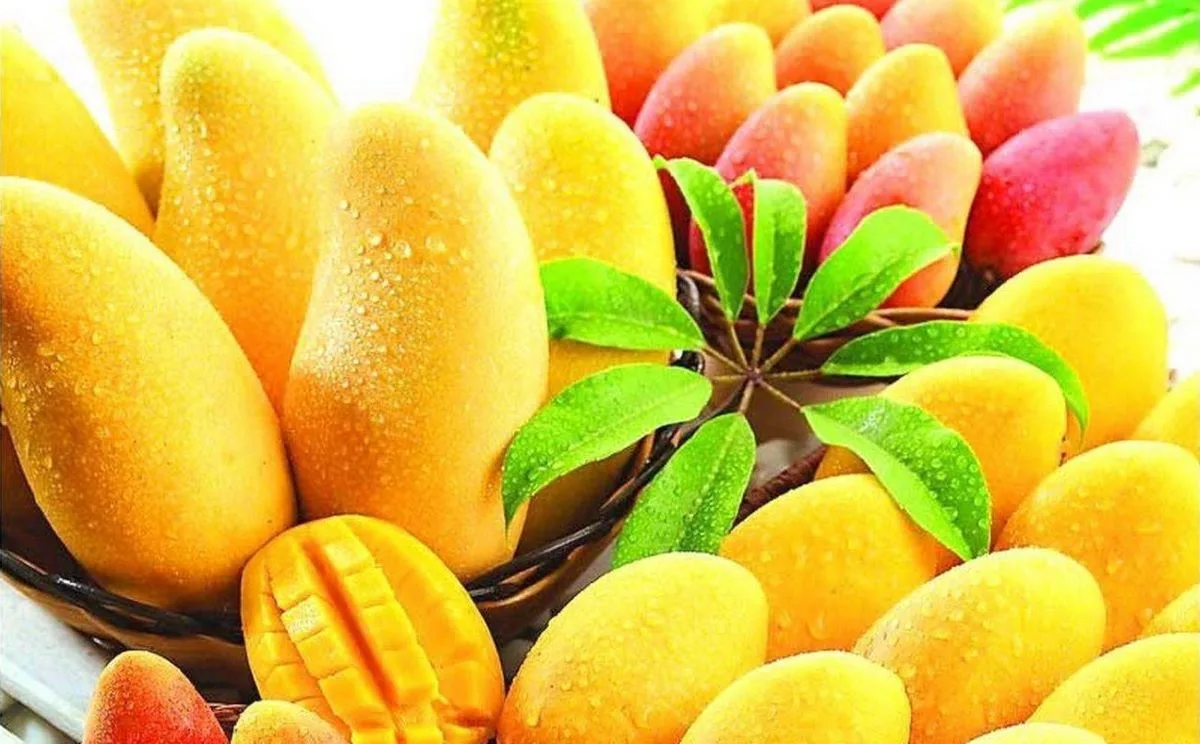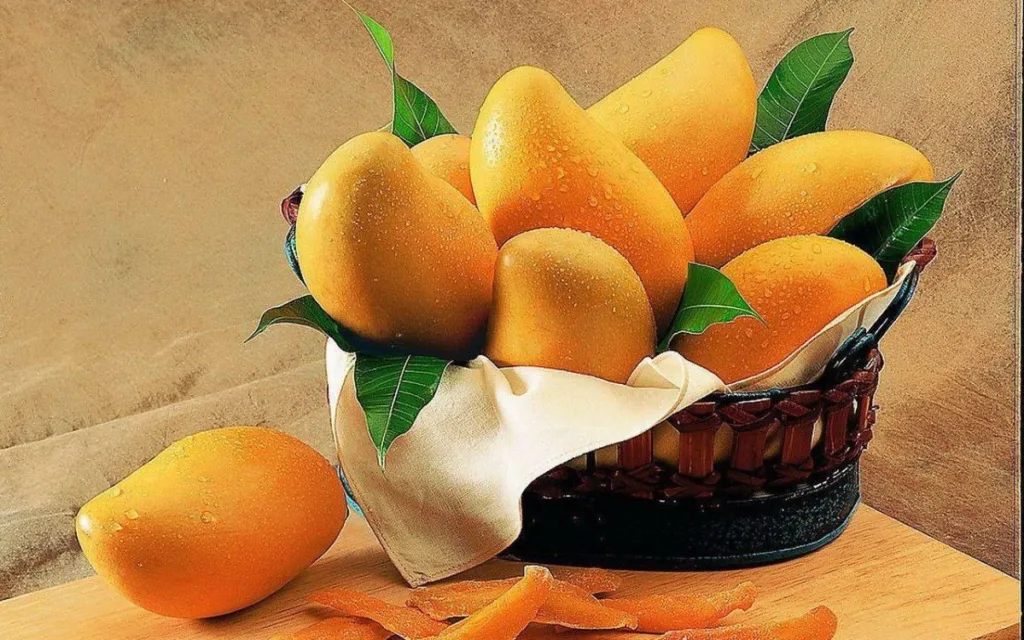
National Mango Day Celebration: A Tropical Delight for Your Senses
National Mango Day is an annual celebration dedicated to cherishing and savoring the tropical fruit, mango, renowned for its delectable taste and various health advantages. With its roots deeply ingrained in Indian history and its popularity spanning across the globe, this delightful occasion holds a special significance.
From indulging in mango-flavored ice creams to enjoying refreshing mango smoothies, there are innumerable mouthwatering ways to relish this exceptional fruit. So, if you’re an avid mango lover, be sure to mark your calendar and delight in the tropical pleasure it brings on July 22, the designated date for National Mango Day.
National Mango Day 2023: Ways to Celebrate
- Expand Your Knowledge: Embrace the chance to enrich your understanding of various mango varieties, their cultivation methods, and the cultural importance they hold. The mango is not just a delicious fruit; it carries a rich history and cultural significance, especially in regions like India, where it has been cultivated for over 5,000 years. Take this opportunity to learn about the different types of mangoes, their unique flavors, and the diverse ways they are used in various cuisines.
- Promote Sustainability: Contribute to sustainable sourcing efforts by opting to purchase mangoes from local farmers or ethical suppliers, supporting environmentally friendly growing practices. The mango industry has a significant carbon footprint, but by choosing responsibly sourced mangoes, you can help reduce its impact on the environment. Look for certifications that indicate sustainable practices, such as organic or fair trade labels.
- Spread Mango Delight: Inspire your friends and family to relish mangoes by sharing your most cherished mango recipes with them. Whether it’s a classic mango salsa, a tropical mango and pineapple smoothie, or a refreshing mango sorbet, sharing your love for mangoes with loved ones can make National Mango Day even more special.
- Engage in Festive Discoveries: Take part in National Mango Day celebrations by exploring mango-focused festivals and events in your vicinity. These gatherings often feature tastings, cooking demonstrations, and enjoyable activities centered around mangoes. It’s a perfect opportunity to try out new mango recipes and interact with fellow mango enthusiasts.

National Mango Day 2023: Yummy Recipes to Try
To celebrate Mango Day, we can indulge in a delightful array of mango-infused dishes throughout the day. Starting with a refreshing breakfast, a luscious mango smoothie can be a perfect choice. For lunch, savor the goodness of a delectable mango salad, offering a burst of flavors and textures. And for a scrumptious dinner, why not experiment with a tantalizing mango and chili marinated chicken?
1. Mango and Pineapple Ice Cream Recipe
A tropical fusion of mango and pineapple in a creamy ice cream delight is an incredibly tasty ice cream recipe to try. The sweetness of mango and the tanginess of pineapple complement each other perfectly in this frozen treat.
2. Mango and Chilli Marinated Chicken Recipe
The dish was crafted by the renowned chili expert, Dan May. Notably, he authored his debut cookbook, “The Red Hot Chili Cookbook,” with the noble aim of enlightening the public about the various advantages and virtues of chilies. The combination of juicy mango and spicy chili creates an explosion of flavors in this mouthwatering chicken dish.
3. Sticky Rice, Mango, and Palm Syrup Recipe
This dessert is tasty and simple. It could also be paired with spiced stewed plums, and in the summer, with a variety of berries. The chewy texture of sticky rice combined with the sweetness of mango and palm syrup makes this dessert a delightful treat.
4. Kiwifruit, Mango, and Orange Smoothie Recipe
Whip up a refreshing Kiwifruit, Mango, and Orange Smoothie for a tropical flavor explosion! This vibrant smoothie combines the goodness of kiwifruit, mango, and orange to create a nutrient-packed and refreshing drink.

5. Prawn, Avocado, and Mango Salad Recipe
How about trying this amazing summer salad featuring a blend of mango, avocado, and succulent prawns? Create a delectable Prawn, Avocado, and Mango Salad that combines the perfect balance of flavors and textures!
6. Avocado Mango Salad Recipe
Savor the freshness of an Avocado Mango Salad, a delightful combination of creamy avocado and sweet mango that’s a true taste sensation for your palate. Perfect for a light and refreshing summer meal!
7. Chilled Mango, Coconut, and Pearl Pudding Recipe
Indulge in the cool and creamy goodness of Chilled Mango, Coconut, and Pearl Pudding, a tropical dessert that will transport you to paradise with every spoonful! The combination of mango and coconut creates a heavenly tropical flavor in this delightful pudding.
8. Mango and Lime Sorbet Recipe
Whisk up a tangy and refreshing Mango and Lime Sorbet, a delightful frozen treat that combines the sweetness of mango with the zesty kick of lime for the perfect summer dessert!
9. Mango and Passion Fruit Jam Recipe
Create a luscious and tropical Mango and Passion Fruit Jam, a flavorful spread that pairs the sweetness of mango with the tangy essence of passion fruit to brighten up your breakfasts and snacks!
10. Tropical Mango, California Walnut, and Turmeric Smoothie Bowl Recipe
Whip up a Tropical Mango, California Walnut, and Turmeric Smoothie Bowl, a vibrant and nutritious blend that celebrates the goodness of mango, the crunch of walnuts, and the health benefits of turmeric in one delightful bowl! This smoothie bowl is not only delicious but also packed with nutrients.

Mango History & Production
Mango is the succulent, aromatic fruit of an evergreen tree and a member of the cashew family of flowering plants. Botanically, mango is a drupe, consisting of an outer skin, edible flesh, and a central stone enclosing a single seed, just like other stone fruits such as plum, cherry, and peach.
Mango History & Culture
Mangos originated over 5,000 years ago in the Hindo-Berma region, which extends from eastern India and southern China across Southeast Asia. The mango seeds traveled from Asia to the Middle East, East Africa, and South America around 300 A.D. Cultivation of mangoes moved westward with the spice trade, and the Portuguese were the first to establish a mango trade in Calcutta in 1498. Spanish explorers brought mangos to South America and Mexico in the 1600s.
U.S. Sources for Fresh Mango
Mangos thrive in tropical and subtropical climates. The primary source countries for fresh mangoes include Brazil, Ecuador, Guatemala, Haiti, Mexico, and Peru. These regions provide a consistent supply of delicious mangoes to consumers in the United States.
Cultivation of a Mango Tree
Mango trees can grow up to 60 feet tall and bear fruit 4 to 6 years after planting. They require tropical growing conditions to produce a good crop and produce mature mangoes in about 4 months. Mangoes are typically harvested once a year.
Harvesting & Packing Mangos
Mangos are harvested by hand when mature but not ripe. Most mangos imported into the U.S. undergo washing, sizing, and a hot water treatment to control fruit flies, ensuring that consumers receive fresh and pest-free fruit.

Popularity of Fresh Mango
Mango consumption has grown 32% since 2005 to an estimated 2.47 pounds per year, with import volume for 2012 at 804 million pounds. According to the National Mango Board’s Mango Attitude and Usage Survey, 95% of consumers who have eaten a mango like the flavor. Consumers perceive mangos as tropical, healthy and nutritious, and a special treat, making them a beloved fruit around the world.
Mango Tree’s Carbon Footprint
Mango trees play a significant role in reducing carbon dioxide (CO2) emissions. They absorb CO2 from the environment and use it to form the trunk, branches, leaves, and fruit. Research has found that the average mango tree could sequester 2 to 2-1/2 times the carbon that is emitted during growth, harvest, and transport to the U.S. By supporting responsible sourcing and sustainable practices, we can further enhance the positive environmental impact of mango cultivation.
National Mango Day is a wonderful occasion to celebrate the tropical delight that mangoes bring to our lives. From delicious recipes to learning about its history and culture, there are numerous ways to indulge in the sweetness and flavor of this beloved fruit.
Let us embrace this annual celebration to not only enjoy the taste of mangoes but also to appreciate the efforts of farmers and suppliers who bring these delectable fruits to our tables sustainably. So, on July 22, let’s raise a mango-filled spoon or fork and relish this tropical sensation!





